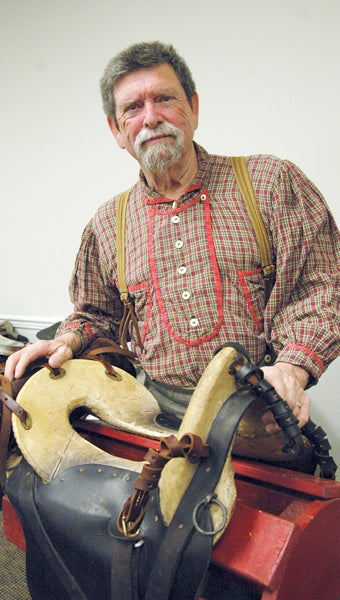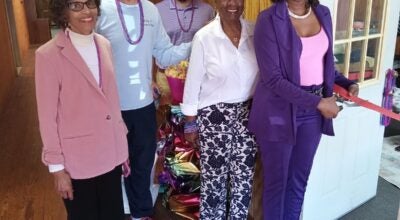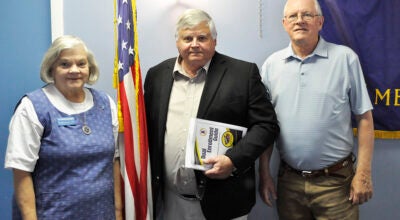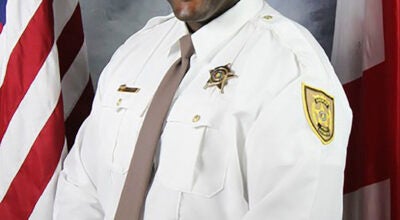Scroggins highlights ‘material culture’ of Confederate army
Published 3:00 am Tuesday, January 26, 2016
Not many Southerners, perhaps very few, ever give thought to the South’s ability to supply its army during the Civil War.
Civil War re-enactor David Scroggins of Bullock County has given a lot of thought, research and study to just that.
Scroggins was the guest speaker at the Sunday meeting of the Pike County Historical, Genealogical and Preservation Society and attracted a large gathering of history buffs.
As a Civil War re-enactor, Scroggins said he was curious as to how the Confederate Army was supplied.
“There’s not a lot of information about the ‘material culture’ of the CSA army,” he said. “Mainly because there were so few war records for the Confederacy. Most of the records were burned, destroyed or scattered. Only about 30 percent of the records were recovered. And, too, history is written by those who win. We did not win.”

Messenger photo/Jaine treadwell
David Scroggins, a member of the 53rd Alabama Cavalry re-enactment unit was the guest speaker at the Sunday meeting of the Pike County Historical, Genealogical and Preservation Society. He explained the process he uses to make a saddle like those used by the Confederates during the Civil War.
Scroggins said even the clothing worn by the soldiers is rare. “If the soldiers had clothing worth wearing when they came home, they probably wore in out working on the farm,” he said. “These people were not a ‘throw away’ generation.”
During the early stages of the war, the states had to provide the uniforms for the soldiers.
“Some states would give out patterns to the women to make the uniforms. Others would give the soldiers money to by the clothes and they would buy anything off the shelf.”
As a result, the soldiers’ uniforms would be anything but uniform.
Different patterns were used and, at one time, there were 3,000 seamstresses making uniforms for the Rebel soldiers. Often, the seamstresses would alter the pattern by adding colored cuffs or collars or taking off a pocket to save time.
The dyes used for the uniforms often didn’t produce the same color. There were incidences when the dyes turned the gray bluer than the blues of the Union uniforms.
As the war continued, the soldiers’ clothing would be supplied from depots and arsenals.
“Then, there was battlefield acquisition,” Scroggins said. “Soldiers would pick up needed supplies off the battlefields, so it was not uncommon for the Confederate soldiers to be wearing Union overcoats, pants and shirts and they would look like Union soldiers.”
The arsenals were in constant need of raw materials and manpower. However, Scroggins said the image of the Ragged Rebel may be somewhat exaggerated.
“The image of the Rebel, soldier barefoot and ragged, may have been accurate at times but the supplies were there,” Scroggins said. “It was a matter of getting them to the soldiers.”
Scroggins, whose re-enactment unit is the 53rd Alabama Cavalry, has expertise in making saddles and tack for his horse. He displayed his interpretation of the Nashville McClellan saddle at the meeting. “This saddle is patterned after descriptions of the saddles coming from both the Nashville and Atlanta Arsenals,” Scroggins said.
Scroggins said many of the Confederate arsenals were looted and/or burned.
“Following the war, the South was more economically destitute that Nazi Germany after World War II,” he said. “So we can’t be exactly sure of the saddles that were produced.”
Scroggins’ saddle is made of wood and covered with rawhide. “If the rawhide is wet before it put on the wood, it will shrink and lock like iron,” he said.
Scroggins said, as a re-enactor, he has opportunities to participate in different living history events. He usually portrays a Rebel horse soldier but, if the need arises, he will don the Federal blue and play the role of a Union soldier.





